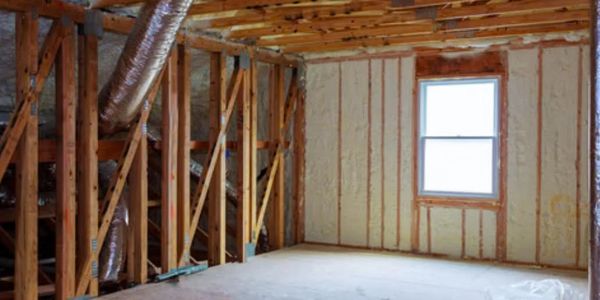Signed in as:
filler@godaddy.com
Signed in as:
filler@godaddy.com

Removing insulation from a building or facility can be necessary for several reasons related to safety, efficiency, and maintenance. Here’s a clear explanation you can use to communicate this to your company:
Insulation removal is often required when the existing insulation is damaged, contaminated, or no longer effective. Over time, insulation materials can degrade due to moisture, mold growth, pest infestation, or physical wear and tear. This degradation reduces the insulation’s ability to maintain temperature control, leading to higher energy costs and uncomfortable indoor environments.
Additionally, some older insulation materials may contain hazardous substances such as asbestos or fiberglass that pose health risks to employees and occupants. Removing these materials safely is crucial to comply with health and safety regulations and to ensure a safe working environment.
Another reason for insulation removal is during renovation or remodeling projects. Removing old insulation allows for upgrades to newer, more efficient insulation materials that improve energy efficiency, reduce heating and cooling costs, and enhance overall building performance.

Replacing attic insulation with spray foam offers significant benefits that improve energy efficiency, comfort, and the overall health of your building.
Spray foam insulation provides superior air sealing compared to traditional insulation materials like fiberglass or cellulose. It expands upon application, filling gaps, cracks, and hard-to-reach spaces in the attic, creating an airtight barrier that prevents unwanted air leaks. This airtight seal reduces drafts and stops warm or cool air from escaping, leading to lower heating and cooling costs.
Spray foam also has a higher R-value per inch than most other insulation types, meaning it offers better thermal resistance in a thinner layer. This makes it especially effective in attics where space can be limited. By maintaining consistent indoor temperatures, spray foam enhances comfort throughout the year.
Another advantage is moisture control. Spray foam acts as a moisture barrier, reducing the risk of mold and mildew growth that can occur with traditional insulation when moisture infiltrates the attic. This helps protect the structural integrity of your home and improves indoor air quality.
Additionally, spray foam insulation adds structural strength to the attic by bonding to surfaces, which can improve the durability of your roof and ceiling.

Replacing your insulation with loose-fill blown-in insulation is an effective way to improve your building’s energy efficiency and comfort. Our company specializes in professional installation of this type of insulation, offering a reliable and efficient solution for upgrading your existing insulation.
Loose-fill blown-in insulation consists of small, lightweight particles—typically made from fiberglass, cellulose, or mineral wool—that are blown into attics, walls, or other cavities using specialized equipment. This method allows the insulation to fill gaps, voids, and irregular spaces more completely than traditional batt insulation, ensuring a consistent thermal barrier.
By choosing our company to replace your insulation with loose-fill blown-in material, you benefit from:

Replacing your insulation with batt or rolled-in insulation offers a practical and cost-effective way to improve your building’s thermal performance and comfort. Batt insulation, typically made from fiberglass or mineral wool, comes in pre-cut panels or rolls that fit between studs, joists, and rafters, making it a popular choice for many insulation projects.
Here are key reasons why batt or rolled-in insulation is a good replacement option.
While batt insulation requires careful installation to avoid gaps or compression that reduce effectiveness, it remains a trusted and proven method for replacing or upgrading insulation. Choosing batt or rolled-in insulation provides a balance of performance, affordability, and ease of use that suits many residential and commercial applications.
Our team ensures precise installation tailored to your building’s needs, maximizing insulation performance and longevity. Replacing your old insulation with loose-fill blown-in insulation through our company is a smart investment that enhances energy savings, comfort, and property value.
We use cookies to analyze website traffic and optimize your website experience. By accepting our use of cookies, your data will be aggregated with all other user data.